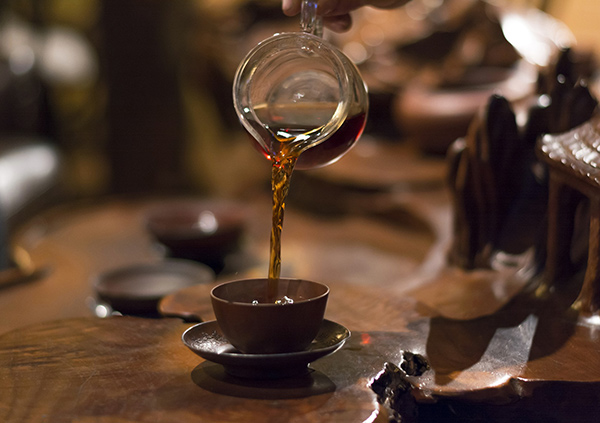Subtotal: $
Checkout
One of my favorite books to re-read periodically is G. K. Chesterton’s The Ballad of the White Horse, because having a favorite G. K. Chesterton book is the price of entry to being a Christian intellectual who writes online. Ballad is a mostly fictionalized lyrical telling of the Christian British King Alfred’s defeat of pagan Viking invaders. There is a scene in it that has stuck with me over the years: King Alfred stumbles into the camp of the Vikings, who think him just a common minstrel. They have a song contest between them, each singing about what they think is best in life. After the Vikings have each sung their songs of war, conquest, and doom, King Alfred, posing as a bard, makes his reply:
Ere the sad gods that made your gods
Saw their sad sunrise pass,
The White Horse of the White Horse Vale,
That you have left to darken and fail,
Was cut out of the grass.
Therefore your end is on you,
Is on you and your kings,
Not for a fire in Ely fen,
Not that your gods are nine or ten,
But because it is only Christian men
Guard even heathen things.
For our God hath blessed creation,
Calling it good. I know
What spirit with whom you blindly band
Hath blessed destruction with his hand;
Yet by God’s death the stars shall stand
And the small apples grow.
In the midst of a fictionalized rap battle between Vikings and a clandestine king, Chesterton snuck in an important point: the church (Chesterton’s “Christian men”) is big enough to house (or guard) the greatest achievements of every tongue, tribe, and people; that is, every culture. In Alfred’s reply to the Danes, he is referring to the Bronze Age chalk “White Horse” for which the story is named: a white horse carved in a hillside near the battle site where Alfred drove back the Vikings. For millennia, the residents of the region have kept it clear of weeds and grass, despite general mystery about its purpose or origin. A strange glyph carved into a hill by pagans, possibly in worship of their gods, has been maintained and kept up by Christian villagers.
The line, and the example, neatly encapsulates a specific view of what Saint John’s Revelation is talking about with “every tongue and tribe and nation.” Namely, that Christians’ view of “cultures” should be that they will be preserved within the church, not destroyed by it. I have written elsewhere about how this reality provides enduring, eschatological legitimacy to a certain morally restrained kind of nationalism.
But that is not all that this reality communicates. Especially for those of us working in cross-cultural environments (and, given a globalizing economy, that increasingly means all of us), it suggests that while, yes, every culture stands condemned and called to repentance, in every culture there is something to be kept. There is a White Horse that needs weeding. Christianity is a big enough tent to house all the creative energies of humanity. If it is God’s church, then it can hold all the imaginative flourishings of God’s people.

Public domain
This was all on my mind recently as I was pouring tea. When my wife Ruth and I moved to Hong Kong to serve as missionaries in the Lutheran Church-Hong Kong Synod, we asked trusted local friends here: “What can we do to learn about the world and culture in which y’all live?”
We were given many suggestions. “Learn Cantonese!” was the biggest one, and we have been trying valiantly, albeit with little success. We were given reading lists. Local news sites. Added to WhatsApp groups. Ruth began to dance with ladies in the park. I read some Chinese classics in my spare time. We tried to do our part.
But one element stands above many others as a place where all the strangeness and glory of Hong Kong culture manifests itself:
Tea.
Our older friends in Hong Kong, and especially elderly church members and the old guys who gamble on board games in the park, were pretty uniform in their view: if you, Lyman, do not learn to pour tea, you will never be a real man, and also will never have a glimpse of our world.
After language, this was the strongest response we got. Tea! Learn tea! Develop tea-related opinions. Have tea preferences. Do it right, well, and often.
This was all a bit jarring to me because, when we moved to Hong Kong, I hated tea. I didn’t touch the stuff. Considered it an unfortunate necessity of politeness in many cultures, including my own, the American South.
Our younger friends in Hong Kong often shared my view, having very different views of tea than their elders: Tea? Sure! Taiwanese bubble tea is great! Also, the Japanese matcha is very fun. Have you tried the Korean tea with cream cheese?
But if the conversation drifted towards “Chinese tea” or gongfu cha, if I mentioned I was cultivating a palate for oolongs, I’d get mixed responses. Sometimes, “What? Why?” Sometimes, “Ugh, so Chinese” (here Chinese is being used as a shorthand for mainland China, contrasted to “Hong Konger” identity, especially given political tensions).
On other occasions, I’d get enthusiastic responses: surprised and happy I was trying hard to learn a piece of cultural history; or extremely impressed that I was actually not awful at making tea; or even bashful – that I must think it all a bit silly, surely?
This mixture of responses is emblematic to me of the cultural world younger Hong Kongers move in. Their elders especially have a strong sense of a specific kind of Chineseness. Younger folks have a less uniform view of their cultural identity, and more mixed feelings about it.
But one last response always interested me: a substantial undercurrent of sadness.
We have a friend who is originally from Shantou, a city in southeast China famous for its obsession with traditional Chinese tea, and reputed to have the highest tea-consumption per capita in the world. But being raised in Hong Kong, our friend never learned to pour tea the way her parents did. So in turn, our friend’s daughters never learned to pour tea at all, leading to some slight embarrassment when the girls interact with their grandparents.
Which brings me back to pouring tea. It was while helping our friend’s daughter learn to pour tea (by practicing with leaves from the trees outside our church, of course) that I thought of King Alfred’s response to the Viking lords. Somewhere in the afternoon of tea leaves and teapots and YouTube videos helping a child rediscover her cultural birthright, I felt like I was pulling the weeds from the White Horse. As we turned the cups to clean them in the boiling water, I thought how every culture is like this: always a single afternoon lesson with children away from being lost to history.
As we poured cup after cup, it was a chance to talk: about tea, of course; about school; but mostly about why we serve others tea before we serve ourselves (“the first shall be last”), why we take the time to learn old lifeways (“honor thy father and thy mother”), and why “Chinese Christian” is not an oxymoron (“every tongue and tribe and nation”). We talked about why it’s important for us to learn these old things: Christians do not force you to learn a foreign tongue and dress a foreign way to worship; we believe your culture has beauty in it worth preserving.
As strange as it may seem for a white American missionary to be teaching an eight-year-old Chinese girl from the tea capital of the world how to pour tea, such I understood to be my Christian duty.
Already a subscriber? Sign in
Try 3 months of unlimited access. Start your FREE TRIAL today. Cancel anytime.







Carolyn Hansen
Your first sentence made me laugh out loud! (Big Chesterton fan here.) And the rest of this piece is beautiful and thoughtful. I don't know how to pour tea, but I'm going to make myself a pot right now anyway.